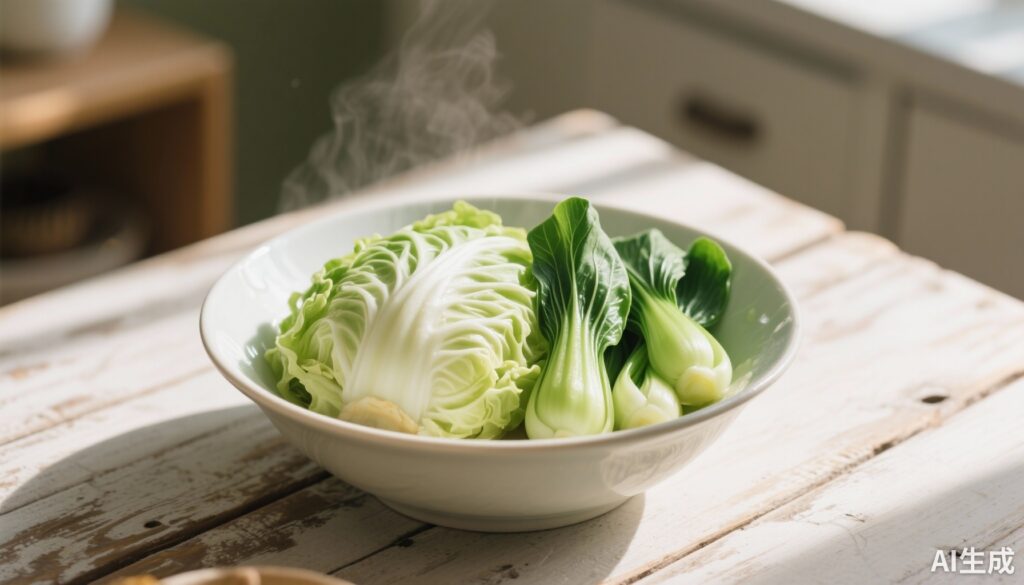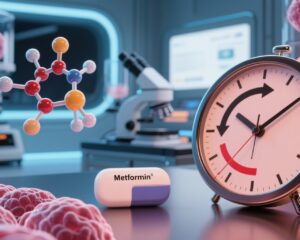Introduction: The Timeless Wisdom of Food as Medicine
“民以食为天” (“People regard food as their heaven”) is an ancient Chinese adage that captures the profound wisdom of nourishment being fundamental to life and health. Our daily diet provides the essential building blocks that sustain bodily functions and foster health across the lifespan. Among these nutrients, folic acid (vitamin B9) plays an especially crucial role, particularly for middle-aged and elderly adults during the renewal and growth of spring.
Scientific research has illuminated how folic acid supports immune function, helps prevent hypertension and atherosclerosis — common chronic conditions in older adults — and aids in cognitive health and anemia prevention. Insufficient folic acid intake in this group can lead to multiple health issues and accelerate biological aging. As a water-soluble vitamin, folic acid’s role in cellular repair, DNA synthesis, and blood formation is indispensable for aging populations.
The Science Behind Folic Acid and Healthy Aging
Folic acid is vital for the synthesis and repair of DNA, red blood cell formation, and regulating homocysteine levels, an amino acid linked to cardiovascular risk when elevated. Deficiency in folic acid has been associated with several conditions prevalent in the elderly, including elevated blood pressure, atherosclerosis, memory decline, and anemia. Studies show that adequate folic acid intake enhances immune responsiveness and reduces inflammation, thereby supporting healthier aging.
Despite its importance, modern diets often lack sufficient folic acid due to prevalent consumption of processed foods, fast food, and delivery meals that disrupt dietary balance. This nutritional gap negatively impacts health outcomes and accelerates age-related deterioration.
Common Misconceptions: Why Folate Needs More Attention
One misconception is that folic acid supplementation is necessary only during pregnancy. While prenatal folate is essential, middle-aged and elderly individuals also require adequate folate intake for vascular and cognitive health.
Another misunderstanding is equating all green vegetables with equal folate content. In reality, folate content varies widely among vegetables, making awareness of high-folate foods critical.
Natural Dietary Sources: Unlocking the Power of High-Folate Vegetables
To counter folate deficiency, consuming natural, folate-rich foods is a practical and effective strategy. These foods are also packed with vitamins, dietary fiber, antioxidants, carotenoids, and essential minerals, supporting overall immune function and slowing aging processes.
1. Cabbage (Packaged as “Hand-torn Cabbage”)
Known regionally as “大头菜” or “Da Tou Cai” (large-head cabbage), cabbage—also called Chinese or Western cabbage—is an affordable, widely available vegetable. It is tender, crisp, and nutritionally rich, containing vitamins, fiber, carotenoids, minerals, and most notably folic acid—approximately 15 times the folate content of celery.
Regular consumption of cabbage each week can significantly elevate folic acid levels, boost immunity, and reduce fatigue in older adults.
Culinary Tip: For preserving nutrients and texture, use high-heat, quick stir-frying with garlic, dried chili, and soy sauce. This method locks in moisture and flavor, enhancing palatability and nutrient retention.
2. Bok Choy Braised with Tofu: An Immune-Promoting Combo
Bok choy, a springtime vegetable, offers a balanced nutrient profile rich in minerals, vitamin C, protein, calcium, phosphorus, iron, and an impressively high folate content—about 15 times greater than celery.
Beyond folate, eating bok choy can help alleviate heatiness, improve liver function, promote diuresis, aid digestion, protect skin, and moisturize dryness—benefits especially valued by aging adults.
Recipe Overview:
– Heat oil to medium (about 50-60% heat).
– Stir-fry pork slices briefly to render fat.
– Add aromatic spices: star anise, dried chili, green onion, ginger.
– Stir-fry bok choy until softened.
– Add soaked vermicelli and water; simmer for several minutes.
– Include pan-fried tofu; simmer briefly.
– Season with salt, a splash of soy sauce, sesame oil.
– Garnish with fresh cilantro; retain ample broth for enhanced flavor and nutrient delivery.
This comforting dish is not only flavorful but also nutrient-dense, aligning with dietary goals for immune enhancement in older adults.
Expert Insights on Folic Acid and Aging
Dr. Emily Thompson, a geriatric nutritionist, emphasizes, “Maintaining adequate folate intake is a cornerstone of healthy aging, impacting cardiovascular health, cognitive function, and immune resilience. Incorporating folate-rich vegetables such as cabbage and bok choy offers a natural, synergistic approach without over-reliance on supplements.”
Public health guidelines increasingly advocate for diverse, plant-rich diets to combat micronutrient deficiencies in aging populations, supporting functional independence and quality of life.
Patient Scenario: John’s Journey to Better Health
John, a 68-year-old retiree, experienced increasing fatigue, mild memory issues, and elevated blood pressure. His diet primarily consisted of fast food and minimal vegetables. After his clinician recommended increasing folate-rich natural foods, John incorporated weekly servings of stir-fried cabbage and bok choy tofu stew.
Over three months, his energy levels improved, blood pressure stabilized, and cognitive clarity returned. John’s experience underscores the practical benefit of natural folate-rich foods in managing common age-related health concerns.
Conclusion: Embracing Natural Folate for Healthy Aging
Folic acid is indispensable in preventing age-related chronic diseases, supporting immune function, and slowing cognitive and physical decline. Natural foods like cabbage and bok choy, with folate content many times that of celery, represent excellent dietary options for middle-aged and elderly individuals.
Addressing folate deficiency through naturally folate-rich foods is a practical, delicious, and holistic approach to aging healthfully. Health practitioners and the public alike should prioritize folate awareness and consumption to optimize aging outcomes.
References
1. Bailey RL, Berry RJ, et al. Biomarkers of folate status in US adults: Findings from the National Health and Nutrition Examination Survey 2003–2006. Br J Nutr. 2013.
2. Crider KS, Bailey LB, Berry RJ. Folic acid food fortification—its history, effect, concerns, and future directions. Nutrients. 2011.
3. Shane B. Folate and vitamin B12 metabolism: Overview and interaction with riboflavin, vitamin B6, and polymorphisms. Food Nutr Bull. 2008.
4. Selhub J, Jacques PF, Rosenberg IH, Rogers G, Bowman BA, Gunter EW, Wright JD. The use of blood folate biomarkers for risk assessment: a report from the Biomarkers of Nutrition for Development (BOND) workshop. Nutrients. 2016.
The information herein aims to guide readers and health practitioners in recognizing natural sources of folic acid and integrating them into balanced diets to promote healthy aging.


